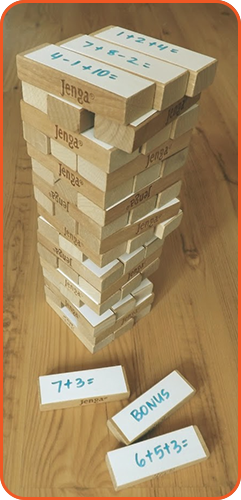Family game nights are popular, but have you ever thought about changing your family game night to a Family STEM Night?
A special night like this requires family members to think like an engineer or a scientist to identify and solve problems. Besides the potential of landing a prestigious STEM position in the future, children who are exposed to STEM benefit in other ways as well. Not only do they perform better in science and math, but their problem-solving, analytical, communications and creative skills improve. Further, they become better prepared for future technological innovations.
(Learn more about how to answer the question "What is STEM?")
Families can work together to use the engineering design process just as STEMists do with products from our affiliate partner Groovy Lab in a Box. And there is no better way to learn than to learn while having fun! Invite the whole family—grandparents, cousins, aunts and uncles!
Here are some of the things they can do:
Stacking Cups
One fabulous team-based STEM activity for any age is cup stacking with
rubber bands. You will need six plastic disposable Solo cups, rubber bands
and string. Each team will get one rubber band that has four strings tied
to it with enough string left to grab on to. The teams will be instructed
to build a 6-cup pyramid by only touching the strings attached to the
rubber bands. This STEM challenge is an excellent team building exercise
and promotes siblings work together to be successful. It also can be
extremely competitive as each team tries to be the first to complete their
pyramid.
Sock Walk
Have each family member grab a sock and place it over one shoe. Then, head
to the park or your local nature trail for a family outing. When you return
home, remove your sock and spray it with water. Then, place the dirty, wet
sock in a plastic Ziploc bag and seal. Next, tape the bag to a window. For
the next two weeks, watch what grows in your bag. Remember to write your
name on your bag so you know which one is yours.
Paper in Flight
Your STEMists will love this activity. Provide three sizes of paper and one
paper clip. Ask each family member, or team, to create three paper
airplanes. Ask them to explore the different ways to make wings, the nose
tip and the tail. Tell them to try the paper clip in different areas of the
plane to see how the added weight affects the flight. When each person or
team experiments with their planes and chooses the best of the three, hold
a competition to see which plane takes the longest flight, or the farthest
flight.
DIY Jenga
Adrianne Meldrum, private tutor and author of The Tutor House blog , uses
Jenga, a classic game of physical and mental skill, to teach her students
in a unique way. Jenga can be customized for any subject – from spelling,
addition, subtraction and more complex equations. Jenga can be used to
inspire team building or an entertaining learning opportunity for STEMists
to learn more about their family members. Adrianne Meldrum at The Tutor House blog
has many resources to create your own DIY Jenga game for family fun.
Research has found that the earlier a child is exposed to STEM education,
the greater the benefits. STEM education in early childhood is especially
effective because between the ages of 1 and 4, a child’s brain is
especially receptive to learning math and logic skills. These early skills
are a critical component of a child’s later learning abilities.
What type of STEM education produces the best results?
STEM projects that are fun,
hands-on, motivational and engaging. For example, a STEM education kit that
presents children with an engineering design challenge leverages
project-based learning and the triangular aspects of long-term memory
knowledge. This, in turn, serves as a knowledge archive from which a child
can access information in the future to help him/her understand other
subjects and aspects of the world around them.
Those at Academics in a Box
are committed to encouraging children’s love of the STEM subjects. Groovy Lab in a Box projects were designed to engage a children’s inner STEMist.
Like this? Sign up for our weekly newsletter and get more of the goodness, plus exclusive giveaway offers!






Comments
Post a Comment